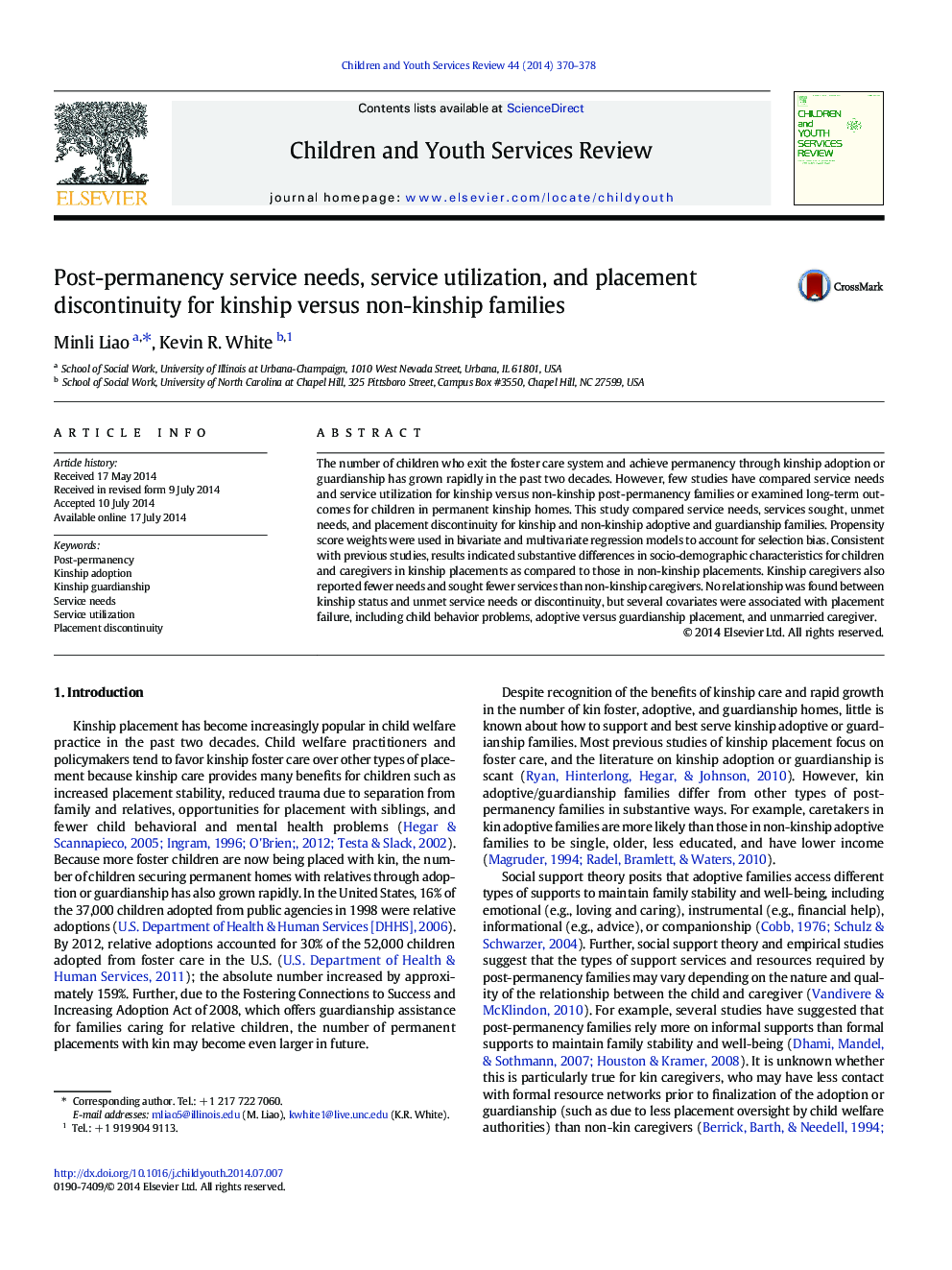| Article ID | Journal | Published Year | Pages | File Type |
|---|---|---|---|---|
| 6834287 | Children and Youth Services Review | 2014 | 9 Pages |
Abstract
The number of children who exit the foster care system and achieve permanency through kinship adoption or guardianship has grown rapidly in the past two decades. However, few studies have compared service needs and service utilization for kinship versus non-kinship post-permanency families or examined long-term outcomes for children in permanent kinship homes. This study compared service needs, services sought, unmet needs, and placement discontinuity for kinship and non-kinship adoptive and guardianship families. Propensity score weights were used in bivariate and multivariate regression models to account for selection bias. Consistent with previous studies, results indicated substantive differences in socio-demographic characteristics for children and caregivers in kinship placements as compared to those in non-kinship placements. Kinship caregivers also reported fewer needs and sought fewer services than non-kinship caregivers. No relationship was found between kinship status and unmet service needs or discontinuity, but several covariates were associated with placement failure, including child behavior problems, adoptive versus guardianship placement, and unmarried caregiver.
Keywords
Related Topics
Health Sciences
Medicine and Dentistry
Perinatology, Pediatrics and Child Health
Authors
Minli Liao, Kevin R. White,
